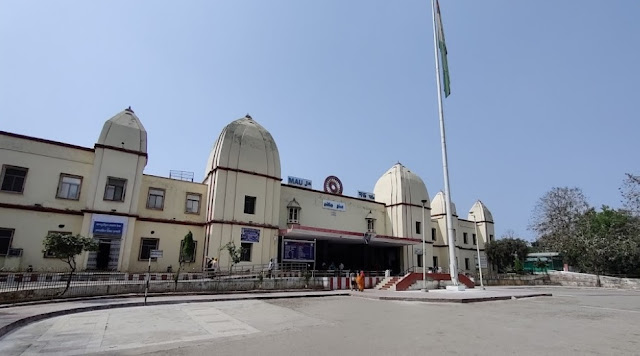Travel Ayodhya
Ayodhya is
one of the real sacred urban communities of Hinduism - the world's 3rd biggest
religion. It has a focal part in the old Indian epic, the Ramayana, whose hero
Lord Rama is God incarnated on Earth as the ruler of Ayodhya. The epic portrays
Lord Rama's 14 year banish, his triumph over underhandedness and his stupendous
come back with his wife Sita to Ayodhya to end up ruler. This arrival to
Ayodhya is commended as Diwali, the main celebration of a huge number of Hindus
around the world. Hence Lord Rama's rule over Ayodhya and its surroundings,
called Ram Rajya, is the encapsulation of good administration and good society
in the Hindu custom.
The
account of Rama has risen above into an incredible persuasive story and
illustration for youngsters and grown-ups far and wide. Ayodhya now symbolize
internal peace, bliss and profound upliftment.
Notwithstanding,
there are less flavourful angles to Ayodhya's history. In 1527, the Mughal
Emperor Babur had a mosque developed at the site in Ayodhya customarily
connected with the conception of Rama. The subsequent Babri Mosque, which
turned into a point of convergence of grievances against moves made by Muslims
to belittle Hinduism, was at last crushed by demonstrators in 1992. Taking
after the obliteration, a great many individuals were murdered in
demonstrations of terrorism and inter-communal savagery, particularly in
Gujarat.
 |
| Ram Paidi ghat on Sarayu river |
Travel Attractions In Ayodhya
Ramkot: The boss spot of love in Ayodhya
is the site of the old bastion of Ramkot which remains on a hoisted ground.
Albeit went by pioneers as the year progressed, this consecrated spot pulls in
lovers from all over India and abroad on Ram Navami, the day of Lord's
introduction to the world, which is commended with extraordinary ceremony and the show, in the Hindu month of Chaitra (March-April).
Vijayraghaw temple: It is one of the best sanctuaries in
Ayodhya, constructed in 2008. In this sanctuary god Ram displayed in 12
appearances called Viswa-Virat(world's enormous). This sanctuary made of red
marbles and stainless steel.
Swarg Dwar: As indicated by mythology, Lord
Rama is said to have changed himself into Lord Mahavishnu and left for
Vaikunth.
Mani Parbat: A previous Buddhist vihara (cavern
with cells) that turned into a Hindu sanctuary. It is dabbed with little
sanctums and on the off chance that you remain on the highest patio you get a breathtaking perspective of Ayodhya, one that incorporates a bunch of little
white structures at the base of the slope that ends up being a Muslim burial
ground.
Lakshmana Ghat: This is the place Rama's sibling
Lakshman is said to have willfully surrendered his life-a a demonstration called
samadhi. Another variant says that he surrendered living after he broke a
pledge.
Mani Parbat and Sugriv Parbat: The principal of these old earth
hills are related to a stupa fabricated by Emperor Ashoka, while the second
is accepted to be an antiquated religious community.
Kanak Bhawan: The Bhawan is frequented by scores
of guests consistently. The sanctuary is broadly known for the pictures of Sri
Rama and Sita wearing gold crowns and as a result of this the Bhawan is likewise
alluded to as Sone-ka-Ghar.
Nageshwarnath Temple: It is said to be manufactured by
Khush, Lord Rama's child. Legend has it that he practically obliterated the
water-living Nagas (semi-perfect snake individuals) in light of the fact that
he associated them with taking his special necklace. Just Lord Shiva's
mediation spared the semi-celestial snakes. Khush then settled this sanctuary
demonstrating the Nagas adoring Lord Shiva, his dad's most loved divinity.
Another rendition of this legend expresses that the lost talisman was found by
a Nag-kanya (young lady from the Naga tribe), who went gaga for him, and as she
was Lord Shiva's fan he built this sanctuary for her.
Choti chawni: Choti chawni is the major temple with white
marble.
Treta ke Thakur: It is a sanctuary that stands at
the spot where Rama is said to have performed the Ashwamedha Yagna. The Raja of
Kulu is said to have manufactured another sanctuary here around 300 years prior
called Kaleram ka Mandir, where the icons of Lord Rama, Sita, Lakshman and
Bharat has supposedly been cut out of a solitary square of dark sandstone.
These icons should be from the first Rama sanctuary, which once remained on the
banks of the River Sarayu.
Hanuman Garhi: Guests to Ayodhya must make a move
towards Hanuman garhi. It is a gigantic structure fit as a fiddle of a four-sided stronghold with roundabout bastions at every corner. The sanctuary is
very adored for its forcing structural engineering and its religious quality.



Comments